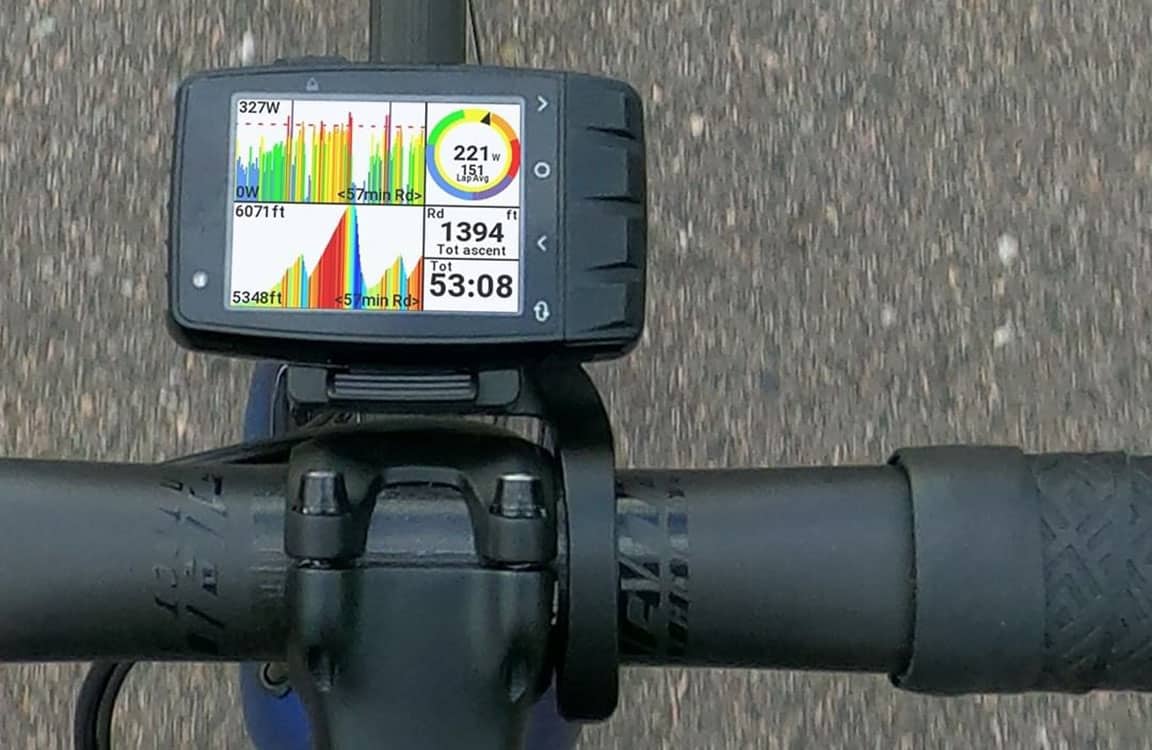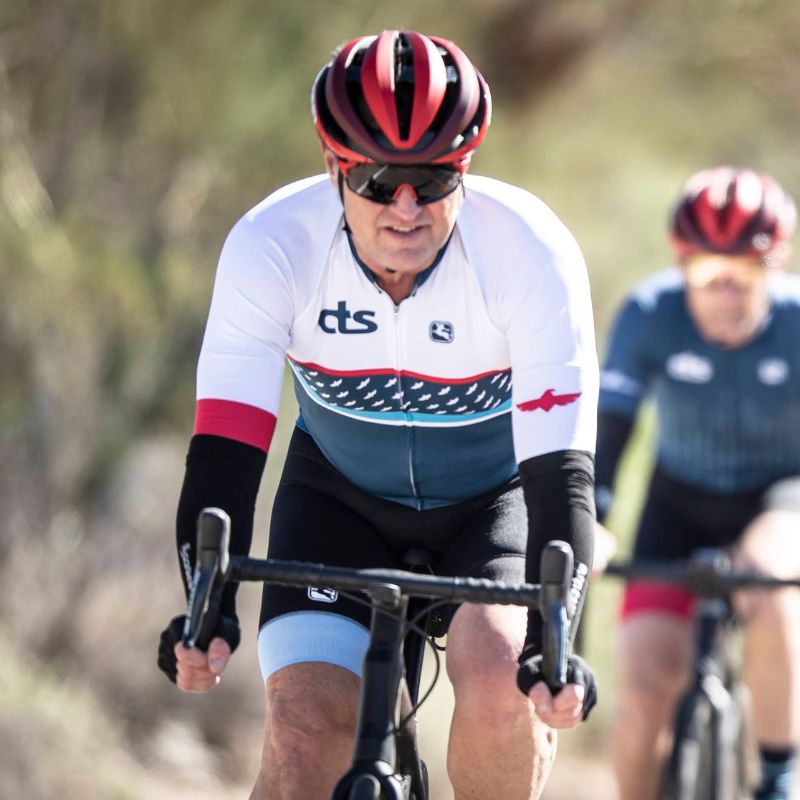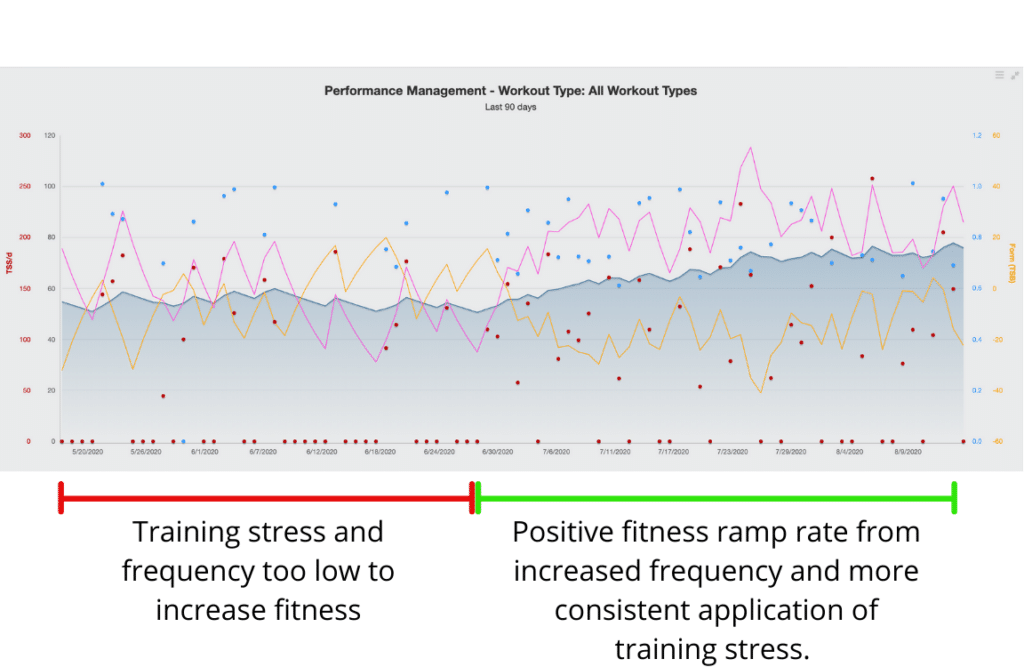
3 Ways Cyclists Are Using Power Meters to Pursue New Goals
By Chris Carmichael,
Founder and Head Coach of CTS
Up until the 2020 season, cycling events, bike races, and group rides provided athletes with hard-to-miss feedback about their fitness and performance. When you had good legs, you rode at the front. When you were tired or not fit, you hung on at the back. People used power meters for training, but their goals were out there in the real world. With COVID putting a pause on pretty much the entire 2020 season, cyclists have turned to goals they can pursue–and monitor–on their own. As a result, we see athletes taking a deeper dive into their power data and using it to set new goals they can achieve with or without a group ride or event.
If you are looking to set goals based on data from your power meter, the any of the following examples will make a measurable and meaningful improvement to your cycling performance.
New Goal: Kilojoules per week or month
Kilojoules are a measure of the mechanical work you performed by pedaling. If you’re a person who generally looks at your average pace or average power as the marker of whether an ride was “good” or not, focusing on kilojoules could be more insightful. Due to a metabolic and mathematical coincidence, you can generally view kilojoules of work done on the bike to be roughly equal to the calories burned to produce that work. The conversion from kJ to kcal is 4.184 kJ=1 kcal=1 Calorie. So, why doesn’t 1000 kJ of work mean 250+ Calories burned? Because the mechanical efficiency of a human on a bicycle is about 25%, meaning it takes 4 Calories to produce 1 kJ of mechanical work. So, the Calories required to do 1000 kJ of work would be 250/.25, or 1000 Calories. Although it’s not actually a 1:1 equivalent, it’s close enough for most purposes.
When you track training by hours, you don’t necessarily know how much work was accomplished, but you can standardize rides using kilojoules. Depending on the wind conditions, the size/composition of the group you’re riding with, or the amount of climbing you’re doing, a 1500-kilojoule ride could take 90 minutes or nearly three hours. Fast group rides or long sections of tailwind can sometimes be deceptively easy, when viewed in terms of kilojoules. If the speed is high but you’re spending most of your time in the draft or tailwind, your actual workload may not be very high. In contrast, during solo ride into a headwind you may rack up kilojoules faster, despite struggling along at a low speed.
How many kilojoules should you aim for? If you’re using TrainingPeaks, look up your weekly kilojoule totals over the past several weeks. If you have not been training consistently, in terms of ride frequency or hours, you will see wide variations in kJ/week. One goal for a month is to increase consistency and keep kJ within 300-500 week to week. If you have been riding consistently, you’ll likely see reasonably consistent kJ/week values. A goal you can shoot for would be to increase this number by 5-10% and stay at that value for a month. You can achieve this by extending your rides, adding an additional ride, or increasing the intensity of some of your rides.
New Goal: Fitness Ramp Rate
Whether you are using Strava’s “Fitness and Freshness” chart or TrainingPeaks’ “Performance Management Chart”, the line denoting fitness (the Chronic Training Load line in TrainingPeaks) will gradually ratchet upward as you increase training stress, rest appropriately, and adapt to your training so you can maintain a higher training workload. The rate at which your fitness increases or decreases is referred to as the ‘ramp rate’. Both Strava and TrainingPeaks allow you to compare your current fitness value to values at regular intervals in the past, like a month, 6 months, 12 months, etc.
It is unrealistic for fitness to increase in a linear fashion and never level off or drop. In fact, any time you rest, fitness decays. But this decay is gradual and the rest is necessary so you can adapt to training and replenish energy to complete more training and boost fitness again. Hence, the reason these charts always have a sawtooth profile to some extent.
Many athletes have been focusing intently on increasing their CTL or fitness value during the 2020 summer season because it’s a visual representation of progress during a time when the normal markers of progress (i.e. group rides, events, race results) are absent. If CTL represents your fitness, increasing it means adding Training Stress that exceeds your current CTL. A good ballpark to aim for during a build period is for CTL to increase 5-8 points per week. Keep in mind, the higher your starting point (CTL of 100 vs. CTL of 65), the harder it will be to achieve additional increases. It may be more realistic for highly fit athletes to increase by 2-5 CTL points per week.
► Free Cycling Training Assessment Quiz
Take our free 2-minute quiz to discover how effective your training is and get recommendations for how you can improve.
With that ballpark, consider setting goals for fitness increases within a one-month period and 3 month period. Be careful not to make build periods too long, or ramp up your training stress too dramatically, because these mistakes can lead to overtraining.
New Goal: Time at intensity
Another power metric you can use for goal setting is time-at-intensity or time-in-zone. During the pandemic, a lot of athletes are doing a lot of unstructured riding with a wide range of intensities during any particular ride. There’s nothing wrong with that, but if you’re looking for a goal–even without doing structured intervals–you can start tracking the amount of time you spend in particular intensity zones each week.
If you’re looking to improve your aerobic conditioning and general endurance, try to increase the time in Foundation Miles and Endurance Miles power ranges (Zones 2 and some Zone 3 in common 6-zone systems). If you’re looking to improve power at lactate threshold or sustainable climbing power, you’ll want to focus on accumulating time in Steady State and Climbing Repeat zones (Zone 4 in a 6-zone system). Because you probably aren’t adding much total weekly training time, increasing time spent in a particular power zone will mean reducing time spent in other zones. This can also be a good way to monitor recovery, in that many riders don’t spend enough time at Recovery Miles intensity (Zone 1), so one goal can be to increase your weekly time spent going easy.
In Closing
A power meter is a great tool for solo training and long periods without events because you can create process goals (time in zone, consistent addition of training stress, etc.) rather than depending on outcome goals (race results, segment times, dropping your buddies).
► FREE Mini-Course: Learn How to Maximize Your Limited Training Time
Learn step-by-step how to overcome limited training time and get faster. Walk away with a personalized plan to increase your performance.
"*" indicates required fields



Comments 4
This article is really helpful. It definite conveyed a message of simplicity in how to effectively use a power meter.
I’m a over 50 masters rider with a 221 FTP; who has been off the bike the past 4 + years due to career and family. Now that I’m consistently back on the bike 5 to 8 hours per week. I’m now looking to better measure my progress. I’m trying not over think or go down the road of analysis paralysis but with so many opinions and approaches to how to become a better cyclist; it’s has become increasingly difficult.
So thanks for this great invite; looking forward to you next article.
Regards,
Eric
Oh forgot one other way that I use the power meter,, for long century rides it’s really helpful to govern the amount of power I apply to the front end of the ride when I’m fresh. As we all know it’s easy to go hard at first. The PM helps me limit myself to properly portion out my resources evenly throughout the entire ride. It has really saved me at about mile 80..when I still have enough gas left. It interesting to see that after fatigue takes a hold 160watts feels like what 320 felt at the beginning,,, then I know I’m screwed.
A few years back I made the investment in a PM.. I thought I would be more into the analytics of it all,, but I turned out to be a casual user of the data.. I use it mainly in the winter to make sure I eventually ramp up close enough to my previous summer’s peak. Then when the season does break I glance at the numbers for general feedback towards fatigue or if I’m getting hammered by headwinds or if I’m being pushed by tailwinds and comapre those numbers to relative effort or HR…
So in short, I’m half in half out but still find it useful. I really bought it out of curiosity and to help entertain me while in the back.
Long term, as long as the device remains consistent over the years, it’s a good metric of fitness, to be able to track trends of one’s health over time.
I think even non competitive
Cyclists can benefit from this metric.
I stated kayacking and want to rig one up to my paddle! I wonder if they already exist??? Probably…
For many years I’ve trained without a power meter, using heart rate and speed as a measuring stick. Then I switched to a power meter and saw the light. Great article!!!